Philips 65-inch OLED903 review: a class- leading OLED UHD 4K TV
Philips 4K picture processing meets Bowers & Wilkins audio

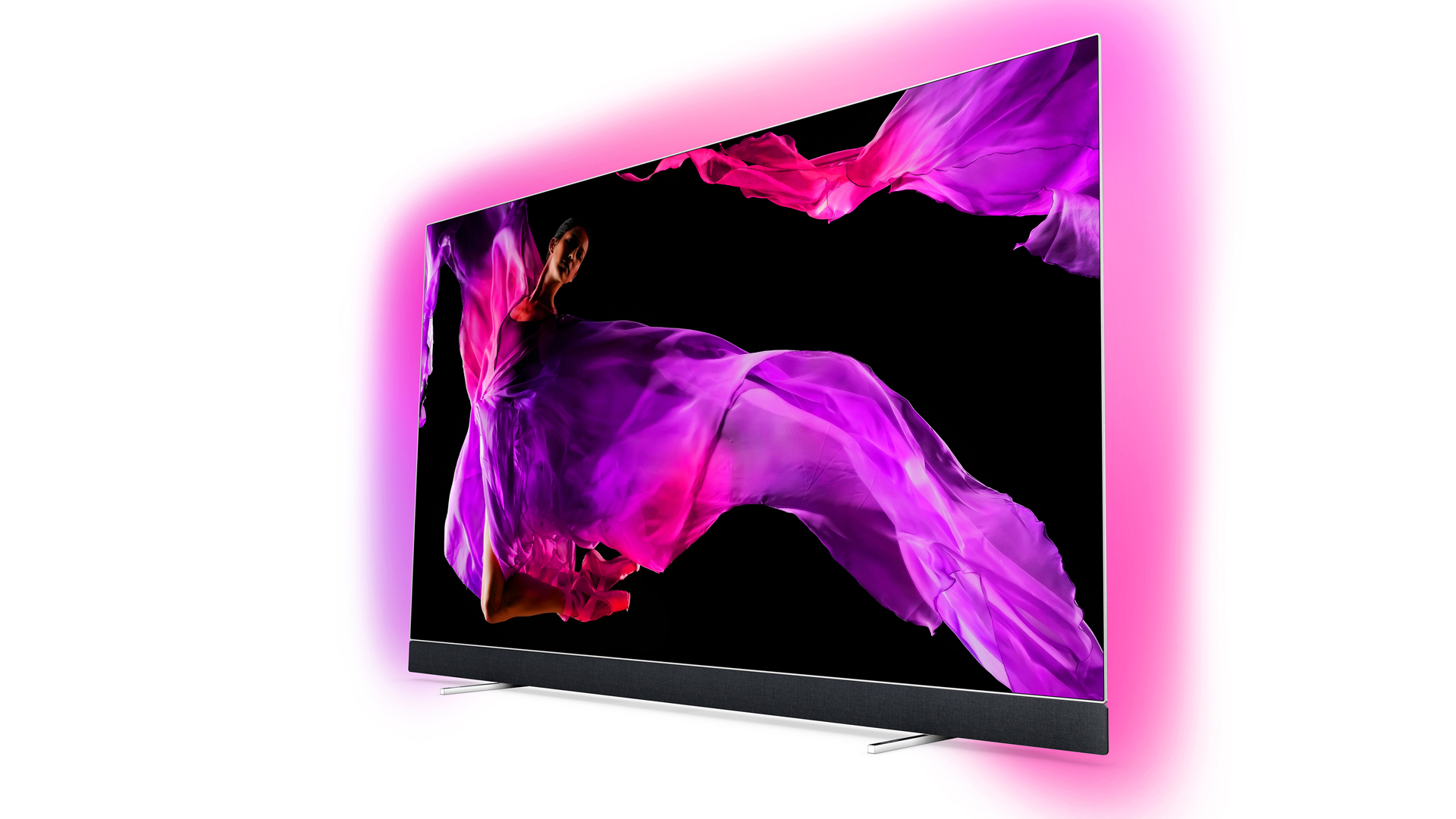
Well, Ambilight colour us impressed. Marrying Bowers & Wilkins audio to Philips' legendary picture processing is a masterstroke. The 903 is a reference-grade UHD TV that sounds as good as it looks… and it looks bloody great.
-
+
Stunning 4K and HD images
-
+
Impressive Ambilight display
-
+
Awesome sound via a Bowers & Wilkins-engineered soundbar
-
-
The cheaper 803 line has many of the same benefits for less dosh
-
-
Motion handling and input lag (for gaming) could be better
-
-
No Dolby Vision HDR support
Why you can trust T3
Kirk has Spock, Harry has Sally and Ant had Dec. Partnerships tend to bring out the best in people. So does the OLED903, the result of a tie-up between Philips and Bowers & Wilkins, similarly raise the bar when it comes to cutting-edge sound and vision?
Certainly from a design standpoint, the new marriage hits the ground running…
Philips 65OLED903: Spec and range

- Screen: 65-inches, OLED
- Audio: 50W total output
- HDMI: 4
- USB: 3
- Other connectivity: headphone out, optical digital audio output, Ethernet
- Tuners: Freeview HD, satellite
- Dimensions 449 x 876 x 50mm, 31.1kg
Philips 903 range
The Philips 903 is available in 55-inch and 65-inch sizes. Both have the same B&W soundbar but Ambilight is even more impressive on the larger model.
Philips 65OLED903: Design
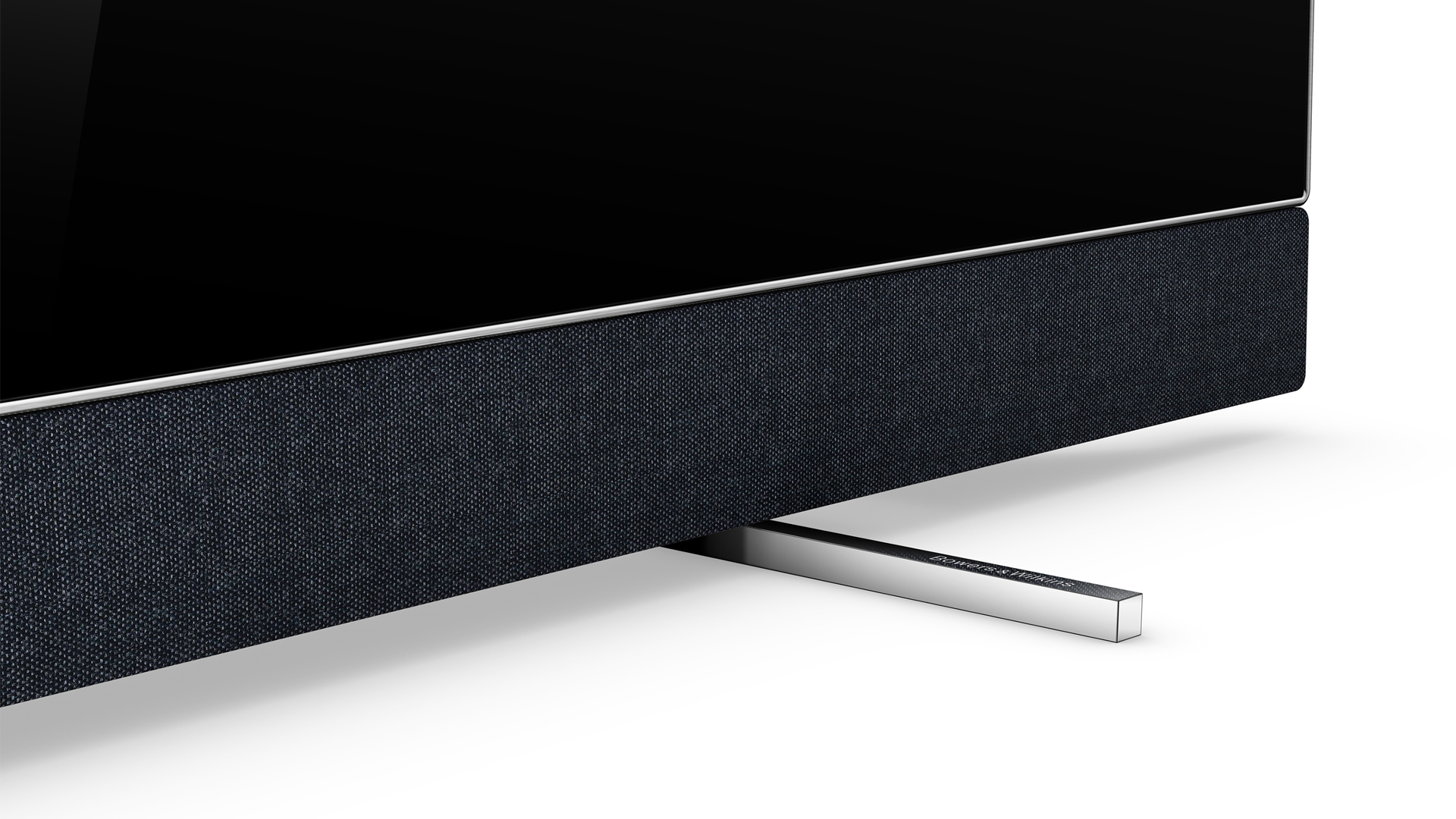
The Bowers & Wilkins soundbar is covered in acoustically transparent Kvadrat cloth
OLED panel and sound system are slickly integrated. Four forward facing drivers, in an enclosure covered by acoustically transparent Kvadrat cloth, are augmented by an active/passive woofer at the rear of the screen.
Connections include four HDMI inputs, a trio of USB ports, an optical digital audio output, component AV via a minijack adapter, and Ethernet, which provides a hard-wired alternative to onboard Wi-Fi.
The set ships with two remote controls, a full size wand with a keyboard on the reverse, and a thin Bluetooth pointer. The latter features a built-in microphone for voice search plus a diminutive touchpad.
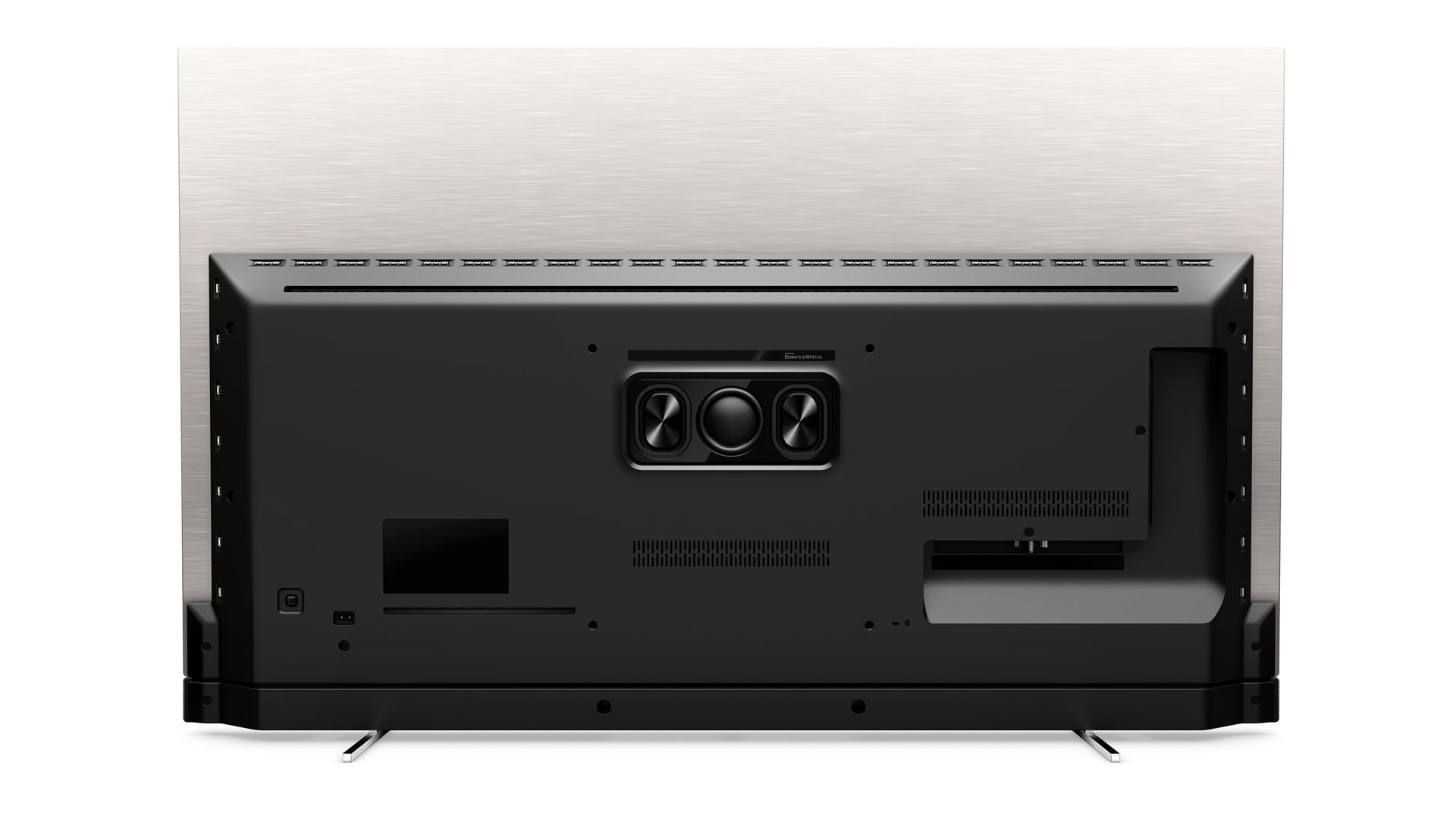
The rear view of this flagship TV set
The set comes with a standard Freeview HD tuner, rather than Freeview Play, so that means no roll-back epg and limited catch-up TV. BBC iPlayer joins Netflix, YouTube and Amazon Prime Video, amid various Euro-centric streaming apps.
By way of compensation, the 903 boasts Philips’ trademark Ambilight smart lighting, here in a standard three-sided configuration. Rear mounted LED lights can mimic the hues of onscreen action, cast flat swathes of colour, or pulsate in time with music.
Philips OLED 903: performance
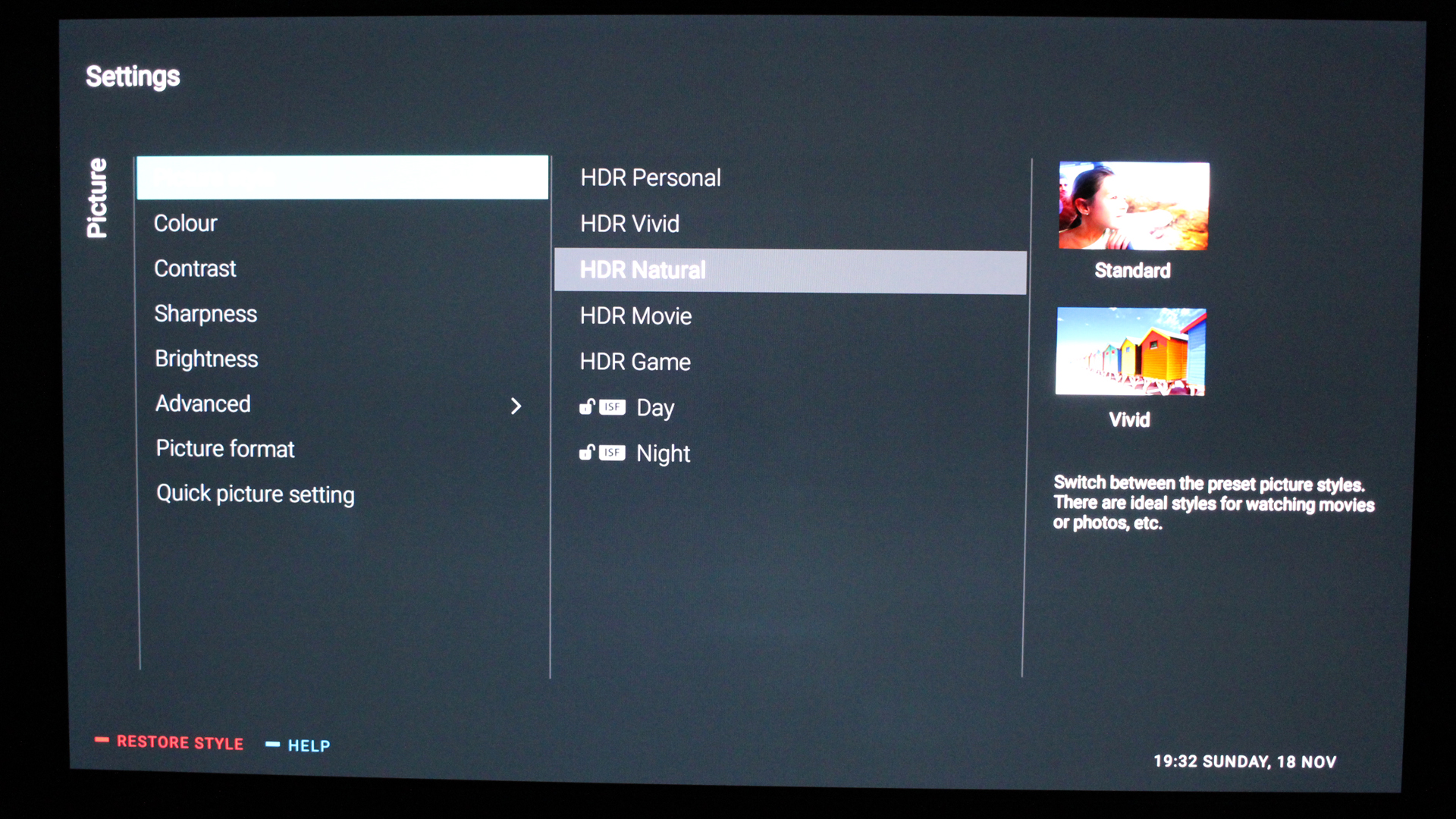
Choose your image mode wisely…
This flagship set features the latest iteration of Philips’ lauded P5 image processor.
Offering deep blacks with nuanced shadow detail and bold, vibrant colours, OLED technology plays to Philips’ picture processing strengths. The panel doesn’t just offer rich images, pictures often have billionaire brilliance – provided you choose the right image preset.
For example, there’s a huge difference in image clarity between HDR Movie and HDR Natural modes.
A big close up of Luke Skywalker’s face (UHD Blu-ray, chapter 29, Star Wars The Last Jedi) looks positively soft in HDR Movie mode, compared with HDR Natural. The moisture in his eyes, the vivid skin detail, all lose clarity. Play the opening text crawl, and the background starfield has around 40 per cent less twinkle.
HDR highlights really dazzle though. The set supports universal HDR10, as well as HLG broadcast HDR and HDR10+, the dynamic metadata rival to Dolby Vision.
Objects of high intensity are delivered with huge dynamics. Cranking contrast to max, we measured in excess of 900 cd/m2 (aka nits) on a 5 per cent HDR test window. Using the standard HDR Natural preset, peak luminance averages a still respectable 750 cd/m2.
Near-black detail handling is excellent. Slight textures and shadows are cut from the gloom, preventing any bland pools of darkness. Images have a realistic, almost mesmeric, depth. This talent isn’t exclusive to Philips, of course. We’ve seen all the major OLED panel vendors significantly improve the handling of near-black detail.
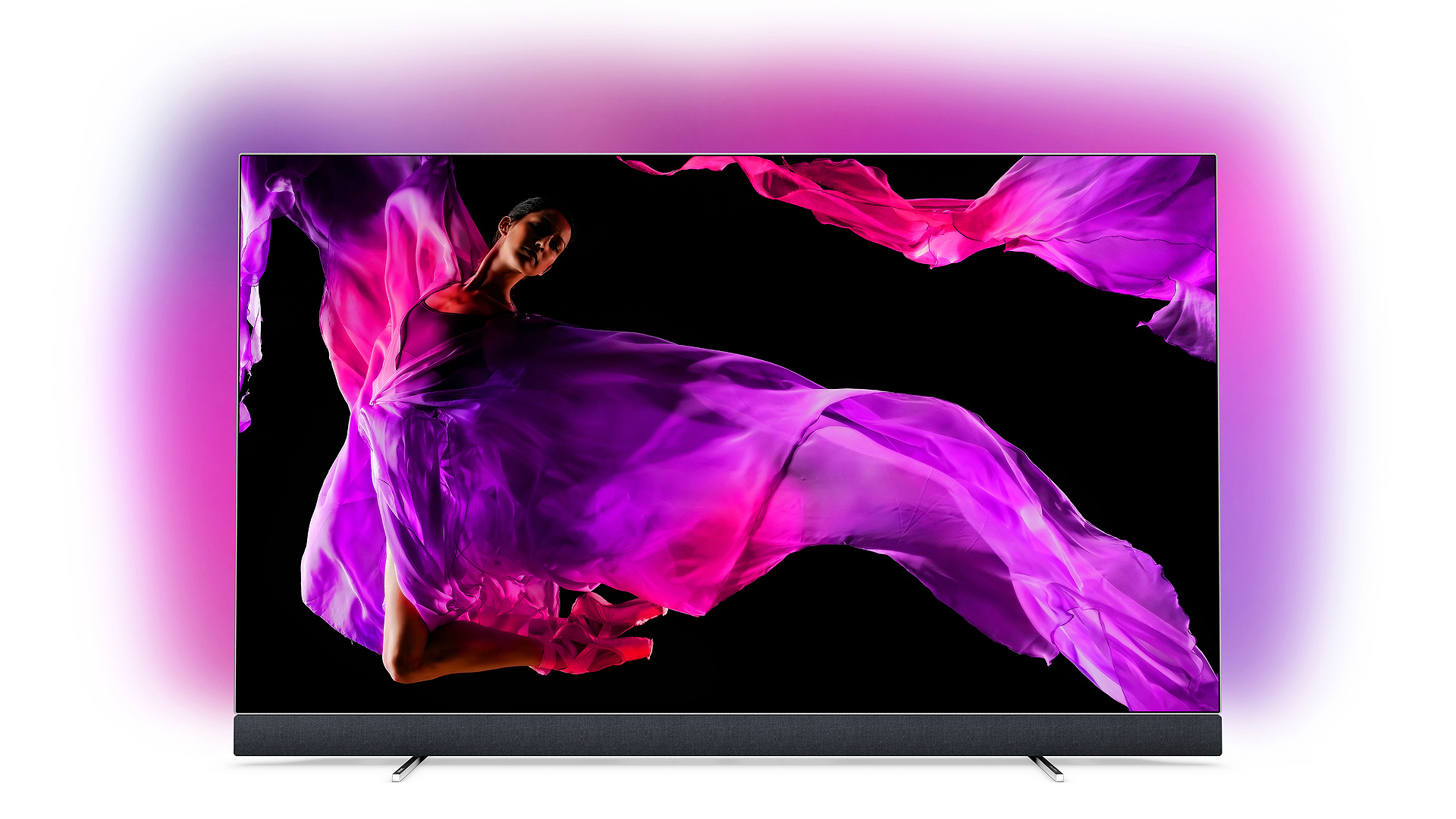
Colour fidelity is outstanding
Where this screen really stands apart from its rivals is in the pure joy it finds in colour fidelity. More often than not, screen makers detune picture pyrotechnics in a bid to pursue mastering authenticy. At its worst, this leads to images which are all but unwatchable in anything other than a darkroom environment. Philips doesn’t do that. It positively evangelises eye-candy hues, making this screen a joy to watch regardless of whether you can see your popcorn.
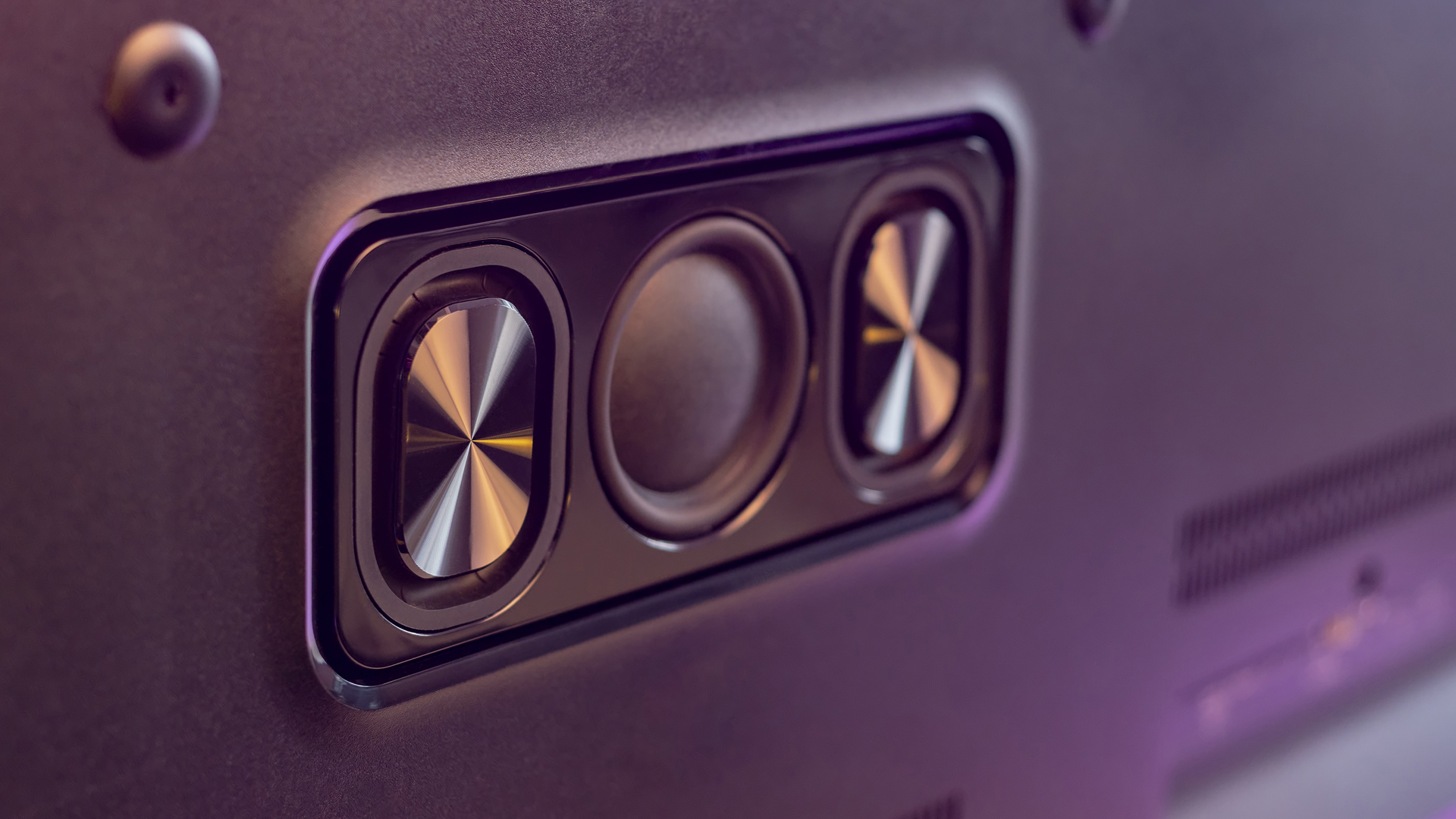
This TV sounds as good as it looks
And what of that Bowers & Wilkins sound system? Well, it’s (generally) terrific. Offering wide stereo separation with superb mid-range clarity, it’s a delight to listen to. That said, bass response is limited. The bar doesn’t drop deep and lacks weight below 100Hz. The overall power output is rated at 50W.
Motion handling is a tad more contentious. In all but Off or Movie motion mode, the set introduces overt artefacts around moving objects. Our advice is either limit the effects of icy interpolation by sticking with Movie motion or experiment with the Personal setting, which unlocks Perfect Natural Motion and Perfect Clear Motion adjustments, to find a presentation that best works for you.
One of the few areas where the 903 is a bit ‘meh’ is input lag. With Game mode engaged, input lag measures 38.9ms. That’s not bad enough to be seriously detrimental to console game play, but frankly it could be better.
Philips OLED 903: verdict
With the 903, Philips has produced a class leading OLED UHD TV able to slug it out with the very best 4K TVs of the year. Stunning image performance, sweet audio and groovy Ambilight, make this screen an OLED superstar.
There’s still room for improvement when it comes to gaming performance and the lack of Dolby Vision HDR support could also be a break point for some. but the 903 still rates very high on our Lust-o-Meter.
Sign up to the T3 newsletter for smarter living straight to your inbox
Get all the latest news, reviews, deals and buying guides on gorgeous tech, home and active products from the T3 experts
For over 25 years, Steve has been casting his keen eyes and ears over the best that the world of TV and audio has to offer. He was the creator of Home Cinema Choice magazine, and contributes to huge range of technology, home and music titles along with T3, including TechRadar, Louder, Ideal Home, the i newspaper, and more.
-
 FREITAG's upcycled F260 MIAMI WIDE is a gloriously bold answer to boring tote bags
FREITAG's upcycled F260 MIAMI WIDE is a gloriously bold answer to boring tote bagsThe extra-wide shopper bag is built for beach days, flippers and all
By Matt Kollat Published
-
 A new age of humanity wins the Sony World Photography Awards 2025
A new age of humanity wins the Sony World Photography Awards 2025Zed Nelson's Anthropocene Illusion highlights the influence of humans on the environment and the artificial spaces left for wildlife in a powerful set of images to win this year's SWPA Photographer of the Year
By Mat Gallagher Published
-
 How to watch Mario Kart World Direct – everything you need to know about the Switch 2 launch game
How to watch Mario Kart World Direct – everything you need to know about the Switch 2 launch gameNintendo will host a new Nintendo Direct presentation this week, here's how to watch it live and what to expect
By Rik Henderson Published
